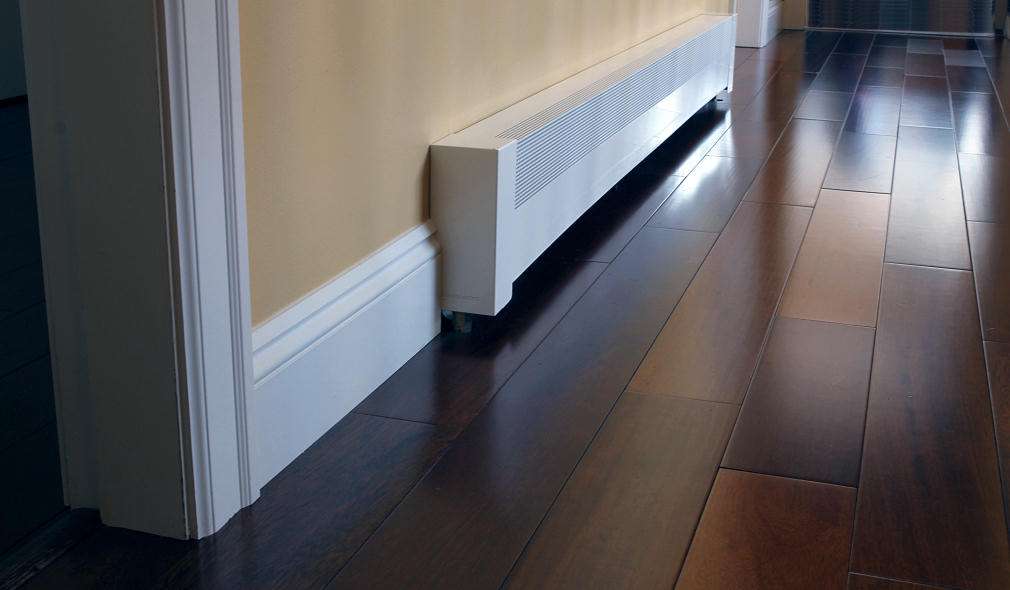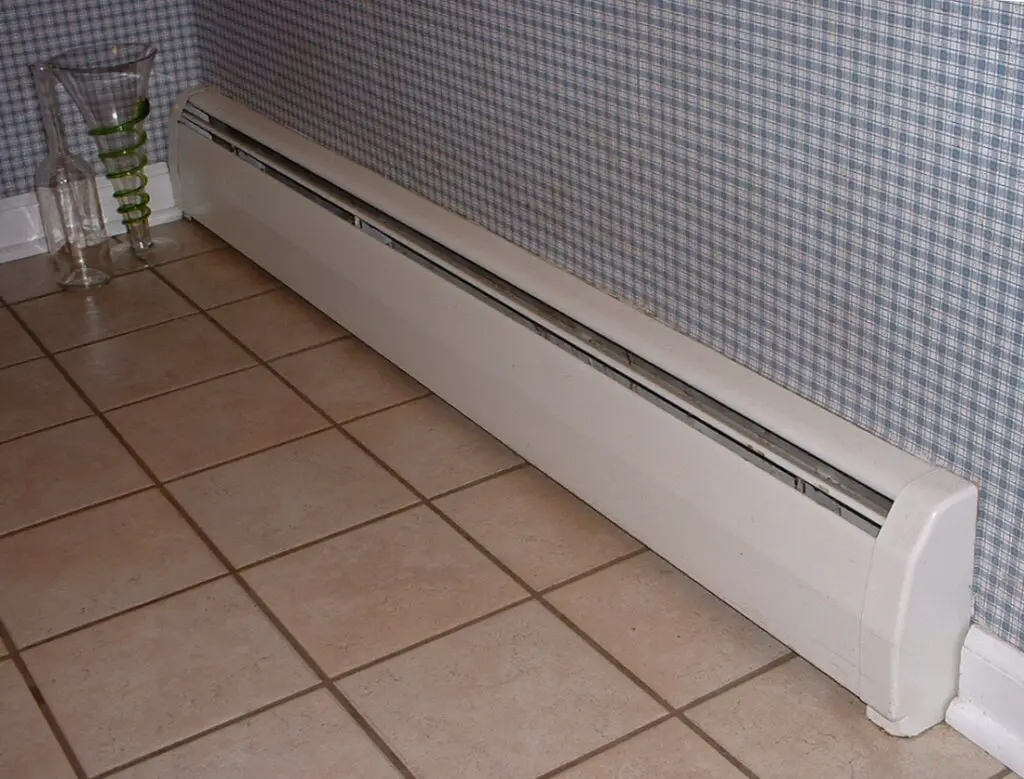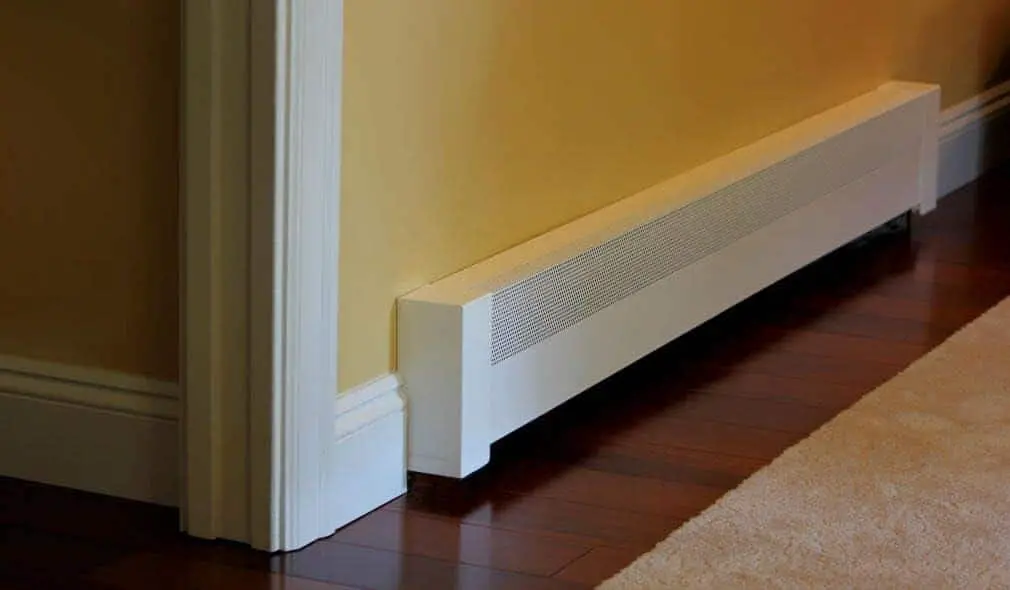Can Baseboard Heaters Catch Curtains On Fire
Introduction
Can Baseboard Heaters Catch Curtains On Fire: Baseboard heaters are a popular choice for heating homes, as they provide efficient and consistent warmth throughout the space. However, many homeowners have concerns about the safety of these heaters, particularly when it comes to the risk of fire. One common question that arises is whether baseboard heaters can catch curtains on fire. In this article, we will explore this topic in detail and provide you with the information you need to keep your home safe.
Firstly, it is important to understand how baseboard heaters work. These heat cause are typically installed along the baseboard of a room and use electric heating elements to generate heat. The heat is then distributed through convection, as the warm air rises and circulates throughout the space. Unlike other types of heaters, such as wood-burning stoves or fireplaces, baseboard heaters do not have an open flame or exposed heating elements, which significantly reduces the risk of fire.
Under certain conditions, baseboard heaters can catch curtains on fire. Curtains too near to the heater pose a risk. Keep drapes, furniture, and other combustible items away from the heater. For correct installation and clearance, see the heater’s manufacturer’s instructions. The distance will vary by type.
Another consideration is your home’s drapes. Long, flowing drapes may be more combustible than other textiles. If you have curtains near your baseboard heater, use fire-resistant fabrics and secure them away. Dust and debris can ignite if they touch the heating elements, thus frequent heater maintenance and cleaning can help prevent this.

Is it safe to hang curtains over baseboard heaters?
Avoid curtains and drapes near electric heaters. Curtains are crucial to room decoration, adding flair and utility. However, you may worry if hanging curtains over baseboard heaters is safe. Window treatments should include baseboard heater safety since they heat a room.
Fire is a major danger when hanging drapes above baseboard heaters. If curtains are too close to baseboard heaters, they may catch fire. This is especially risky with combustible curtains. Therefore, there must be enough space between curtains and baseboard heaters to prevent fires.
Hanging drapes over baseboard heaters may limit heating effectiveness. Curtains can block heat from passing between the heater and room. This may diminish heating efficiency and increase energy use. Choose lightweight, sheer or semi-sheer drapes to avoid this. These curtains let some heat through while offering seclusion and style.
Curtain length is also significant when hanging them over baseboard heaters. Long curtains that touch the floor can block heater airflow, limiting its efficiency. Get shorter curtains or use tiebacks to keep them away from baseboard heaters. Finally, routinely check curtains and baseboard heaters for damage or wear. To keep the environment safe, fix frayed curtains and broken baseboard heaters immediately.
Are curtains and baseboard heaters a fire hazard?
The unfortunate result can be house fires, which commonly start when curtains get too close to these heaters. To avoid this potentially deadly problem, keep curtains and other flammable items at least 12 inches away from baseboard heaters.
Curtains and baseboard heaters can catch fire if misused. Curtains and baseboard heaters can catch fire if not properly secured. Understanding the risks of these goods and taking precautions is crucial.
Curtains near baseboard heaters can catch fire. Hot surfaces can readily ignite drapes and spread flames around the room. To avoid fires, keep drapes away from baseboard heaters. Fire-resistant drapes are less prone to catch fire than synthetic ones.
Unmaintained baseboard heaters can potentially catch fire. Dust and debris can build up on heating elements, increasing fire danger. Baseboard heaters should be cleaned and inspected regularly to avoid blockages. Never cover baseboard heaters with curtains or other things, since this might block ventilation and overheat them.
Curtains and baseboard heaters can catch fire if misused. Keep curtains away from baseboard heaters, clean and examine them regularly, and follow manufacturer directions. These procedures lessen fire danger, protecting your home and family.
Can a baseboard heater catch fire?
These heaters, like baseboards, are always on the lower wall and are 8-10 inches tall and 2-8 feet long, depending on the room. Baseboard heaters are safe, however overuse can cause fires.
Due to its efficiency and cost, baseboard heaters are popular for homes and offices. However, any electrical appliance can catch fire. While baseboard heaters are generally safe when used properly, certain variables might increase fire risk.
Baseboard heater fires sometimes result from faulty installation or maintenance. A poorly installed or neglected heater might start a fire. Dust and debris can cause the heater to overheat and catch fire. Safe heater functioning requires following the manufacturer’s installation and maintenance recommendations.
Use of flammable materials nearby might also enhance baseboard heater fire risk. If the heater gets too hot, drapes, furniture, and paper can catch fire. To avoid fires, keep the heater away from flammable things.
Baseboard heater fires can be caused by electrical faults. A short circuit or defective wiring might cause the heater to overheat and catch fire. To ensure heater wiring and connections are safe, have a competent electrician inspect them. User error can cause baseboard heater fires also. The heater can overheat and catch fire if left on or covered. Read and follow the heater manufacturer’s directions to avoid fires.
Why did my baseboard heater catch fire?
Putting things or furniture too close to the baseboard heater can cause airflow issues and fires if they’re flammable. Make sure your draperies won’t touch your heater.
Baseboard heaters provide warmth and comfort in many homes during the winter. However, these heaters can catch fire, endangering property and people. Preventing these accidents requires understanding their causes. A broken thermostat can cause baseboard heater fires. Your thermostat controls the temperature and turns the heater on and off. When the thermostat fails to turn off the heater at a specified temperature, excessive heat can cause a fire. The thermostat must be constantly inspected and maintained to work properly.
Dust and dirt can also start baseboard heater fires. Dust can build up on heating elements, causing them to overheat and ignite. Clean the heater regularly, including vacuuming or dusting the heating elements, to prevent buildup and fire.
Baseboard heater fires can be caused by electrical faults. Heat from faulty wiring, poor connections, or overloaded circuits can start fires. To detect and fix electrical issues, a licensed electrician must frequently inspect the wiring and connections.
In some circumstances, baseboard heater age and condition might cause fires. Older heaters may have old parts or outdated safety mechanisms, increasing fire danger. Replace older heaters with modern ones that satisfy safety regulations and have more safety measures.
What are the disadvantages of baseboard heaters?
Baseboard Heater Cons
Expensive to operate: Expect higher utility bills than with forced air through an HVAC system. Safety hazard: Electric baseboard heaters can get extremely hot. Without proper maintenance and care, they can become a fire hazard. To prevent fire, keep furniture and curtains at least six inches away.
Baseboard heaters are a popular choice for heating homes and offices due to their affordability and ease of installation. However, like any heating system, they also come with their fair share of disadvantages. It is important to consider these drawbacks before deciding to install baseboard heaters in your space.
One of the main disadvantages of baseboard heaters is their lack of efficiency. Unlike central heating systems, which distribute heat evenly throughout a space, baseboard heaters only provide heat in the area directly in front of them. This means that other parts of the room may remain cold, resulting in uneven heating and potential discomfort for occupants. Additionally, baseboard heaters are known for their slow heating capabilities, which can be frustrating during colder months when quick warmth is desired.
Another disadvantage of baseboard heaters is their reliance on electricity.
While this may not be an issue for some, it can be a significant drawback for those living in areas with high electricity costs. Baseboard heaters can consume a considerable amount of energy, leading to higher utility bills. Additionally, if there is a power outage, baseboard heaters will not function, leaving occupants without a source of heat.
Baseboard heaters can be a safety concern, especially for households with young children or pets. The heating elements in baseboard heaters can become extremely hot, posing a burn risk if touched. It is important to take precautions, such as installing protective covers or keeping flammable objects away from the heaters, to prevent accidents.
In addition to these disadvantages, baseboard heaters can also be aesthetically unappealing. They are often large and bulky, taking up valuable wall space and potentially clashing with the overall design of a room. This can be a drawback for those who prioritize a clean and minimalist aesthetic in their living or working spaces.
Baseboard heaters pose a potential fire risk when curtains are in close proximity. The risk primarily arises from the heat generated by the heater, which can cause the curtains to ignite. This risk is particularly high if the curtains are made of flammable materials such as synthetic fabrics or if they are in direct contact with the heater.
How can baseboard heaters be made safer to prevent fires with curtains?
Baseboard heaters can be made safer to prevent fires with curtains by following a few important precautions. Firstly, it is crucial to maintain a safe distance between the heater and the curtains. The National Fire Protection Association (NFPA) recommends keeping a minimum distance of at least 3 feet between the heater and any combustible materials, including curtains. This ensures that the curtains do not come into direct contact with the heater, reducing the risk of fire.
Additionally, it is important to regularly inspect the baseboard heater for any signs of damage or malfunction. Faulty wiring or damaged components can increase the risk of fire. If any issues are detected, it is essential to have the heater repaired or replaced by a qualified professional. Regular maintenance and cleaning of the heater can also help prevent the accumulation of dust or debris, which can be flammable.
Using flame-resistant curtains or installing a heat-resistant barrier between the heater and the curtains can provide an extra layer of protection. Flame-resistant curtains are made from materials that are less likely to catch fire and can help slow down the spread of flames in case of an accident. Heat-resistant barriers, such as metal or ceramic plates, can be placed between the heater and the curtains to create a physical barrier that reduces the risk of direct contact.
Are there any specific precautions that should be taken when using baseboard heaters near curtains?
When using baseboard heaters near curtains, it is important to take certain precautions to minimize the risk of fire. Firstly, ensure that there is enough clearance between the heater and the curtains. The general rule of thumb is to maintain a minimum distance of three feet between the heater and any combustible materials, including curtains. This will help prevent the curtains from coming into direct contact with the heater and reduce the risk of ignition.
Additionally, it is crucial to regularly inspect the curtains for any signs of wear or damage. If the curtains are frayed or have loose threads, they can easily come into contact with the heater and catch fire. Consider replacing old curtains with fire-resistant materials, such as those made from wool or treated with flame-retardant chemicals. These materials are less likely to ignite and can provide an added layer of protection.
It is advisable to never leave baseboard heaters unattended when curtains are in close proximity. Always turn off the heater before leaving the room or going to bed. This simple precaution can significantly reduce the risk of a fire starting and spreading. Lastly, it is important to have working smoke detectors installed in the vicinity of the baseboard heaters and curtains. Regularly test the smoke detectors to ensure they are functioning properly and replace the batteries as needed.
Are there any alternative heating options that are less likely to catch curtains on fire?
Yes, there are alternative heating options available that are less likely to catch curtains on fire. One such option is radiant floor heating. This type of heating system involves installing heating elements beneath the floor, which then radiate heat upwards. Since there are no exposed heating elements or hot surfaces, the risk of curtains catching fire is significantly reduced. Radiant floor heating also provides a more even distribution of heat throughout the room, resulting in a more comfortable and efficient heating experience.
Another alternative heating option is ductless mini-split systems. These systems consist of an outdoor unit and one or more indoor units, which are mounted on the wall or ceiling. The indoor units blow warm air into the room without the need for ductwork. Since there are no exposed heating elements, the risk of curtains catching fire is minimized. Ductless mini-split systems are also energy-efficient and allow for individual temperature control in different rooms, making them a versatile and safe heating option.
What are the common causes of fires involving baseboard heaters and curtains?
There are several common causes of fires involving baseboard heaters and curtains. One of the main causes is the proximity of the curtains to the heater. When curtains are placed too close to the heater, they can easily come into contact with the hot surface and ignite. This can happen if the curtains are not properly secured or if they are blown by a draft towards the heater. It is important to ensure that there is a safe distance between the curtains and the heater to prevent this from happening.
Another common cause of fires involving baseboard heaters and curtains is the use of flammable materials in the curtains themselves. Curtains made from synthetic materials such as polyester or nylon are more likely to catch fire compared to curtains made from natural materials like cotton or wool. If the curtains are made from flammable materials, it is important to take extra precautions such as keeping them further away from the heater or using flame-retardant curtains.

Conclusion
One of the main reasons why baseboard heaters can be a fire hazard when combined with curtains is the heat they generate. Baseboard heaters work by using electricity to heat up metal fins, which then radiate heat into the room. If curtains are placed too close to the heater, they can easily come into contact with the hot fins and ignite. This can lead to a rapid spread of fire and potentially cause significant damage to your property.
To minimize the risk of a fire starting, it is recommended to keep curtains at least 12 inches away from baseboard heaters. This distance allows for proper airflow and reduces the chances of the curtains catching fire. Additionally, it is important to regularly inspect your baseboard heaters for any signs of damage or malfunction. Faulty wiring or overheating can increase the likelihood of a fire, so it is crucial to address any issues promptly.
It is advisable to use flame-resistant curtains or window treatments near baseboard heaters. These materials are designed to resist ignition and slow down the spread of fire, providing an extra layer of protection. Additionally, installing a heat-resistant barrier, such as a metal or glass panel, between the heater and curtains can help prevent direct contact and reduce the risk of fire.








